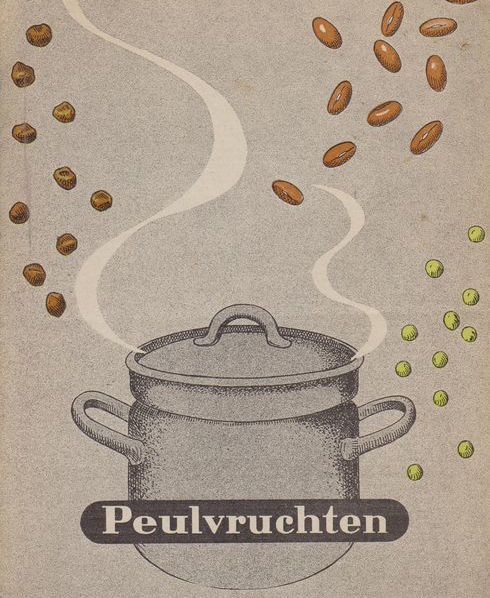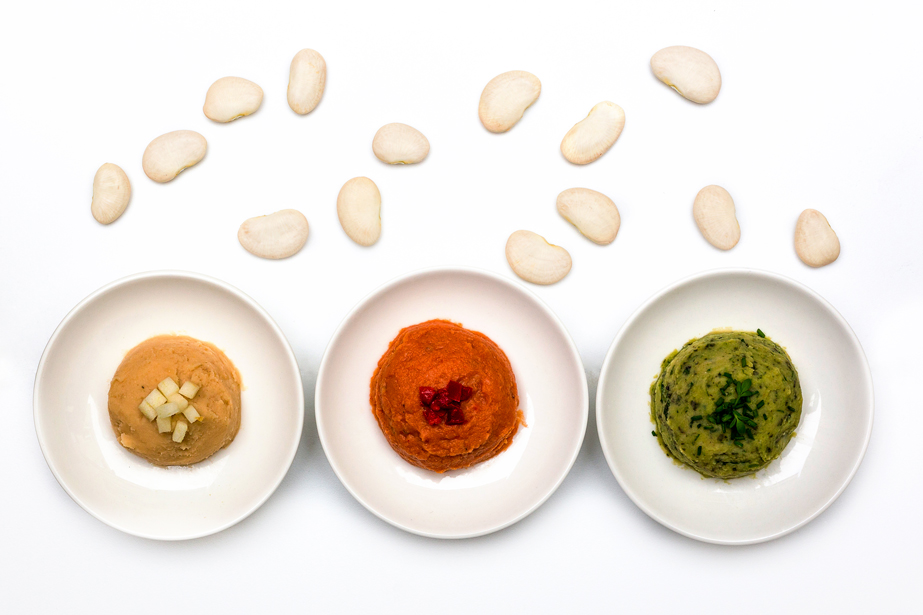Legumes have been at the base of our eating habits for centuries. They are very nutritious, fill you up really fast and when they’re dry, you can easily keep them stored away in a can for a long time. Cookbooks from the Second World War are filled with recipes with legumes. Cookbooks that were written during the war often are full of tips for preparing meals in times of scarcity, monotony in ingredients and lack of products from other countries.

Legumes were cultivated on a large scale in The Netherlands during the war. Aside from the use in warm meals, wartime cookbooks also have recipes for sandwich spreads. This recipe for bean paste is an alternative for the cheese and meats they put on their bread before the war. There were many different recipes for these bean pastes with many different variations. A basic recipe for these bean-pastes can be found in Onze Voeding in Distributietijd from 1941, written by Ria Lotgering-Hillebrand. The author provides a basic recipe for a bean dip in three variations. With some small alterations, this recipe is very suitable nowadays to go with your sandwich or as a dip with drinks. It is also a good recipe to have at your sleeve for when you have some left-over beans.
You can compare this dip to the popular chickpea-based dip ‘hummus’ that you can get basically anywhere nowadays. This recipe is from my cookbook Koken in Oorlogstijd (Wartime cooking).
Ingredients
Base
200 grams cooked white beans
10 grams of butter (room temperature)
1 tsp aroma*
½ tsp salt
*almost every cookbook from the war has the spice ‘aroma’ in it. In The Netherlands, it is still available in supermarkets and it is called ‘aromat’. It is a bright-yellow spice made from dried onions and salt. You can swap it for some broth powder, or even better: mix some pepper, salt and a handful of fresh, chopped herbs in this beandip.
To flavour with
2 tbs finely chopped herbs. (parsley, celery, chervil, grated onion)
2 tbsp tomato paste, optionally with some chopped parsley
2 tbsp apple sauce with 1 tsp sugar
Preparation
Rinse the beans and let them drain in a strainer. Put them in a bowl with the butter, aroma and salt. Puree them into a coarse mixture. Add the flavours you prefer and puree until it has turned into a smooth substance. If it is too dry you can add a little water.

